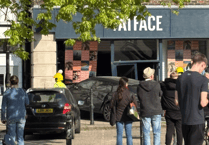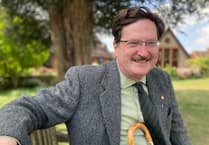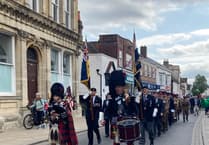J B CORRIE and Co Ltd in Frenchmans Road has been part of the Petersfield business landscape since 1946.
A fourth-generation family business, a quarter of its local employees have been with the company for more than 25 years.
John Bradford Corrie, an entrepreneur and engineer, founded the business initially as an agency for the sale of machine tools, but in the early 20th century he identified the potential of dropper fencing.
Dropper fencing is believed to have originated in Argentina. Native hardwood trees supplied the strips of wood, or droppers, which were used with clips to maintain the spacing of wires stretched at a high tension.
This maintenance of tension in the wires removed the need for fence posts. Fencing large areas of pampas in South America became more cost effective and efficient.
John Corrie’s 1910 patent replaced the wood droppers with steel to improve durability. Further improvements would prevent fences being bent out of shape by large cattle and make the fences higher and stronger.
Before John’s death in 1939, his son Basil had negotiated contracts to fence the bypasses round Leatherhead and Guildford and to provide boundary fencing along railway lines to keep cattle from straying on to the line.
On March 21, 1946, Flextella Fencing and Engineering Ltd in Petersfield joined the group. Flextella manufactured chain link fencing with an iron shop which was capable of manufacturing steel for the fencing industry.
Post war there was a constant demand for railway line side fencing, requiring large quantities of chain link fencing, and the Southern Railway Company became a major customer.
In 1950 Basil’s son Richard became the third generation of the family to join the business.
Contracts with Richmond Park and The Royal Deer Park at Windsor followed the improvements to the height and strength of the fences, which also won a contract with the Meru National Park in Kenya to safeguard its herds of wildebeest and zebra – although not elephants.
Another contract win helped prevent camels straying on to the highways of Saudi Arabia, disrupting traffic and harming themselves.
Previously the dunes created by sand blown against chain link fencing provided an easy path for the camels on to the road, whereas sand blows though dropper fencing unimpeded.
In 1958, the Petersfield factory was doubled in size and four large fully-automatic chain link machines were installed.
However, global competition in the 1960s saw J B Corrie negotiate a deal with a wire supplier which took over the chain link fence manufacture when this became uneconomic in house.
Meanwhile there was a decline in dropper fencing demand in Australia and South Africa because of local manufacture.
J B Corrie manufactured garden equipment and golf trolleys to utilise spare capacity in the factory but eventually abandoned this in favour of diversification in the fencing market.
In the 1980s and 1990s new markets for the J B Corrie range of fencing included specialised fencing around pharmaceutical factories, sports pitches, tennis courts and military establishments.
Richard’s son John is now chairman of J B Corrie and Co Ltd. Did John Bradford Corrie truly appreciate the potential of his patent application as the fourth generation of his family now faces the next 100 years with confidence?




